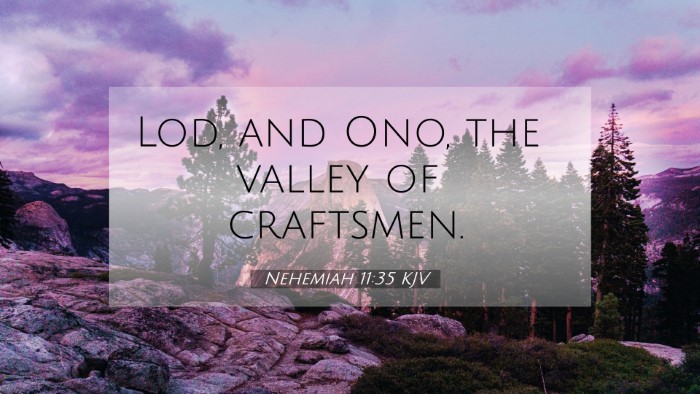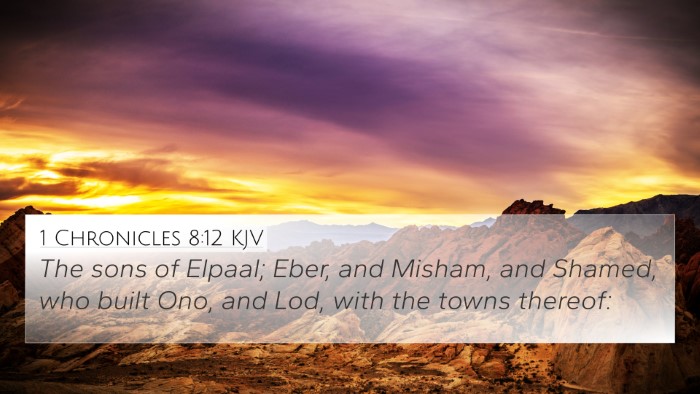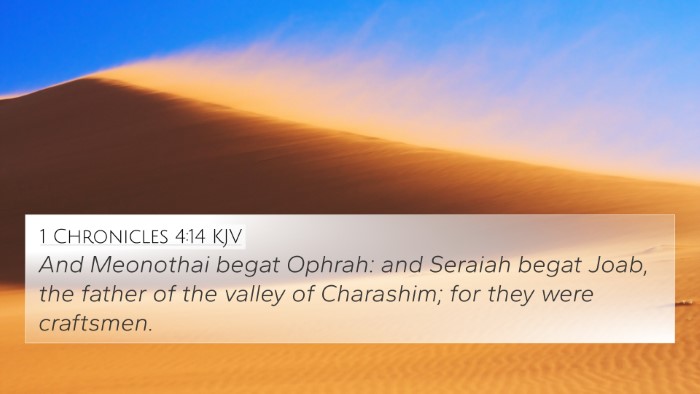Understanding Nehemiah 11:35
Nehemiah 11:35 states: "Zanoah, Adullam, and their villages: Lachish and its fields; Azekah and its villages. They dwelt from Beer-sheba to the Valley of Hinnom."
Summary of the Verse
The verse lists the places where the inhabitants returned after the Babylonian exile, indicating the towns and villages within the region. It reflects the restoration of the Jewish community and their settlement, establishing a sense of identity and belonging in their homeland.
Interpretation and Insights
- Restoration and Identity: Matthew Henry notes that this verse signifies the restoration of communities and emphasizes the importance of returning to one's roots, echoing God's promise of return and renewal.
- Geographical Significance: Albert Barnes highlights the geographic outline provided as significant for understanding the post-exilic Jewish community's settlement, connecting it to their ancestral heritage.
- Historical Context: Adam Clarke emphasizes the historical context, explaining the implications of the locations mentioned and their relevance to the Jewish people's historical narrative.
Bible Verse Cross-References
Nehemiah 11:35 connects with various scriptures that help understand its significance:
- 1 Chronicles 4:21-23: This passage references the descendants of Judah, echoing themes of settlement and community restoration.
- Joshua 15:32: Discusses the cities of the tribe of Judah, providing geographical linkage to the towns mentioned in Nehemiah.
- Micah 1:15: Relates to the geographic implications of Lachish, further emphasizing the importance of these towns.
- Jeremiah 6:1: Contains prophetic significance about the cities and their safety, tying into the relevance of this settlement.
- Ezra 2:25: Details the returning exiles, connecting the foundational rebuilding of communities post-exile.
- Isaiah 37:9: Highlights Lachish's notable role during conflicts, adding depth to understanding the area's historical context.
- Jeremiah 34:7: Offers insights into the geography of Judah which paralleled the communities mentioned in Nehemiah.
Comparative Bible Verse Analysis
Linking these verses presents a holistic view of the historical and spiritual significance of Nehemiah 11:35. Throughout the Old Testament, similar narratives of return, rebuilding, and remembering one's heritage recur, forming a thematic link. Observing these patterns enhances the understanding of Jewish identity and God's commitment to His people.
Thematic Bible Verse Connections
The themes of restoration and identity in Nehemiah 11:35 resonate throughout the scriptures:
- Restoration: Themes of physical and spiritual restoration are prominent in both Ezekiel 36:24-26 and Joel 2:25-26, emphasizing God's redemptive nature.
- Belonging: The communal aspect of returning to their land after exile is echoed in Jeremiah 29:10-14, where God expresses His plans for His people.
- Identity: The reaffirmation of identity through place, community, and worship can be seen in Psalm 126:1-3, which reflects the joy of returning.
Tools for Bible Cross-Referencing
To further explore Nehemiah 11:35 and its connections, utilizing various tools can aid in cross-referencing:
- Bible Concordance: A comprehensive tool that aids in locating biblical words and themes across scripture.
- Bible Cross-Reference Guide: These guides illustrate the interconnectedness of verses, ensuring a deeper understanding of biblical themes.
- Cross-Reference Bible Study: Various methodologies can help institute that study, applying cross-reference techniques for thematic exploration.
Conclusion
Understanding Nehemiah 11:35 in light of its historical, geographical, and theological significance provides valuable insights into God's ongoing work in the lives of His people. Through careful study and cross-referencing with other biblical texts, one can appreciate the profound connections woven throughout scripture, highlighting God’s faithfulness and the importance of communal identity in faith.





